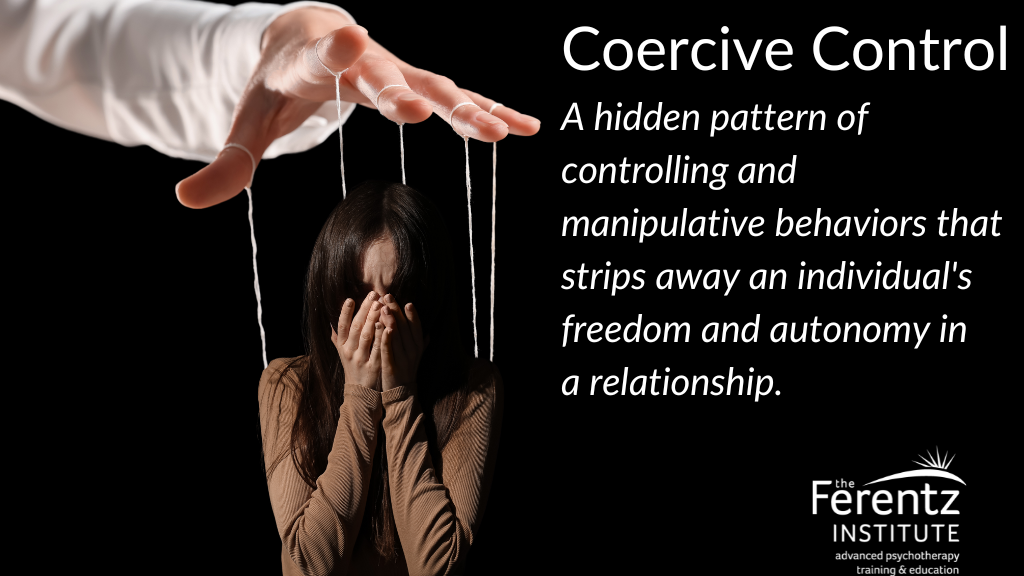by Denise Tordella, MA, LPC

One of the reasons people may seek out therapy is to obtain clarity and make meaning of their experiences in their relationships with their spouses/partners and their children. They may be confused and concerned about how the dynamics of the relationship are affecting them. We listen for patterns in their relationships and the narratives that they are creating around those relationships.
A client may say:
- “I can’t do anything right.”
- “I don’t understand what my spouse/partner wants from me.”
- “I feel like I have no say in what happens in my home.”
- “I feel like I am always on guard, waiting for the next bad, scary, confusing thing to happen.”
- “I feel like I am always walking on eggshells.”
As we begin to explore the dynamics of their relationship, a pattern of coercive control may emerge.
What is coercive control and how does that manifest in relationships?
Coercive control is defined as a pattern of controlling and manipulative behaviors within a relationship. It takes away the individual’s freedom and autonomy to make their own decisions. And, initially it is invisible to the individual.
Is coercive control the same as abuse?
It is critical for us as clinicians to understand that not all abuse is physical. Many of the people we meet with will say, “My relationship is not abusive, my partner does not hit me.” Here are some of the components of coercive control that a client may be experiencing:
- emotional and psychological abuse;
- control of time, space and movement;
- monitoring and stalking;
- sexual abuse;
- physical abuse;
- financial abuse;
- and isolation.
There are types of abuse that do not leave bruises and are devastating to families. When children are in this environment, it profoundly affects them as well. Children are harmed when a controlling parent harms the other parent. The children experience the abuse as well.
Our goal as clinicians is to support adults and children in their recovery from the reverberating effects of coercive control. We should discuss supporting people as they develop a sense of safety in their home. And, we must acknowledge, with compassion, the grief and loss that occurs within a family because of coercively controlling behaviors.
What has been your experience working with clients who experience “coercive control,” and how have you helped your clients to overcome this type of abuse? Let us know in a comment below.
Please join Denise when she presents “The Impact of Coercive Control and Domestic Abuse on Women and Children, to be held on Zoom, Tuesday, October 10. Uncover strategies for recovery while you learn to recognize and reflect on the strengths and efficacy that your clients already possess and how to continue to heal and flourish as they move forward. Everyone deserves to feel safe and free. Learn more and register for this valuable training here.

